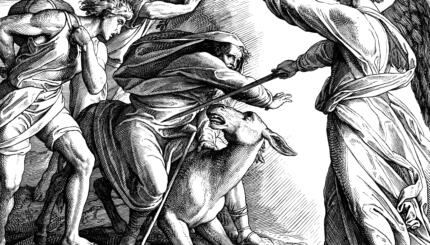The Jewish philosophers and mystics of the Middle Ages developed systematic conceptions of God, speculating specifically on God’s existence and unity.
In all their thinking, the Jewish philosophers of the Middle Ages were greatly influenced by the Arabic thinkers of their time, who themselves were influenced by Greek systems of thought, particularly Aristotelianism and Neoplatonism. These Arabic thinkers proposed proofs for the existence of God, and the medieval Jewish philosophers proposed similar proofs.
Saadiah Gaon (882-942) and Bahya ibn Pakudah (1040-1080) both presented versions of the teleological proof. This proof highlights the complex order of the world and stresses how unlikely it would be for such a perfect world to have appeared by accident. From this, thinkers like Saadiah and Bahya deduce the existence of a creator.
The cosmological proof for God’s existence was also espoused by Jewish thinkers, including Maimonides (1135-1204), the greatest of the medieval Jewish philosophers. Maimonides focuses on the motion inherent in nature and posits that while every motion requires a mover, it is incomprehensible to keep regressing back in time from motion to motion for eternity. Maimonides suggests that there must be a first mover who is, Himself, unmoved. This unmoved mover is God.
Medieval Jewish thinkers stressed the unity of God, often rejecting compartmentalized descriptions of the deity. Biblical descriptions of God, which characterize God in numerous roles (e.g., creator, liberator, legislator) and with numerous attributes (e.g., “merciful and gracious, slow to anger, and abounding in steadfast love” [Exodus 34:6]) were considered philosophically problematic. When we list attributes of God, we divide the deity into a plurality, implying that, for example, God’s attribute of truth is distinct from God’s attribute of compassion.
Maimonides’ philosophy of negative attributes is the classic solution to this problem. He suggests that we cannot say anything positive about God. Anytime we say something positive like, “God is good,” all we can really mean is “God is not evil.” However, there were Jewish thinkers, including Hasdai Crescas (1370-1430) and Gersonides (1288–1344), who supported the articulation of positive attributes.
The belief in God’s unity implies a parallel belief in God’s incorporeality, God’s lack of body, because by definition, bodies are made up of many parts. However, the Bible is replete with descriptions of God that suggest that the deity has some form. Most medieval Jewish thinkers responded to this challenge by interpreting these biblical passages metaphorically and stressing that the Bible speaks in the language of humans.
The attempt to create Jewish dogma or official doctrine, is a conspicuous feature of medieval Jewish thought. Maimonides’ thirteen principles of faith is the most prominent list of dogmas. Seven of these doctrines relate to God: God exists, God is one and unique, God is incorporeal, God is eternal, prayer is to be directed to God alone, God knows the thoughts and deeds of humans, and God rewards good and punishes evil.
Though primarily concerned with experiencing God and affecting mystical change in the world, the medieval mystics, the kabbalists, also struggled with making sense of God’s existence and unity. They suggested that there are two aspects of God, God in Himself and God revealed. God in Himself, known as the Ein Sof or the Infinite, is completely hidden from humankind. The Ein Sof has no attributes (and is thus a complete unity), and we cannot describe or comprehend it. However, we can speak about God in terms of His revealed attributes, the ten sefirot. These attributes are fragmented and dynamic. There is disharmony among the sefirot, and the purpose of human existence is to heal this disharmony, thereby perfecting the world, and indeed God Himself. The doctrine of the sefirot received its fullest treatment in the Zohar, the most important work of Jewish mysticism.
The kabbalistic doctrine of God received further elucidation in the teachings of Isaac Luria, the influential 16th-century mystic. Luria’s greatest theological innovation was his explanation of creation, in which he describes how the infinite God contracted into Himself to create space for the world to exist. Luria called this contraction tzimtzum.



